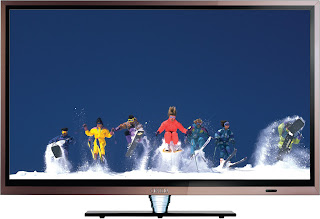People everywhere are becoming more and more concerned about the technical specifications in various consumer products and that is why they are looking for the information which describes these products to their best. There are various sources for the type of information from where people can get at them and feel comforted before buying any consumer product. The quest for the best sources of visual entertainment is on for a few decades now. It is quite an acceptable fact that science has given some very wonderful gadgets for personal and mass entertainment among which various types of televisions are certainly the most important ones. However, the choice is also getting varied each and every day. Today, the choice between LCD and LED TVs is certainly getting tougher and tougher. The battle of LCD vs. LED is continuing for quite some time now.
It is seen that people often get confused in this war of LCD vs. LED and that is why they often get confused whenever they decide to get a new TV for themselves. However, if a little attention is paid towards the technical specifications between theLCD and LED TVs, then the possible buyers can feel it easy to identify the winner of the battle of LCD and LED TVs. The information shared here can certainly help people to get the best information about the LED and LCD TVs.
The main points that one should consider while finding the better of LCD vs. LED
This is quite obvious fact that people must find these differences while evaluating LCD vs. LED TVs. The possible buyers can find the following specifications in findingthe best among LCD vs. LED.
Better picture contrast: The differential contrast between LED vs. LED TVs can be identified by the fact that the LED TVs are known for their better contrast ratios. The contrast ratio is one of the most important factors that can be watched very carefully in this battle of LCD vs. LED TVs. As a matter of fact, the LED TVs make use of high capacity diodes and that is why these TVs are capable of making better contrast ratios. On the other hand, the LCD TVs make us of cold cathode fluorescent backlight tube which is good in quality but it cannot make a significant difference against LED TVs.
Consider the power consumption capacities between LCD vs. LED TVs: It is yet another significant factor that places the LED TVs ahead of the LCD TVs. The powerful capacitors installed inside the LED TVs. Due to this cutting edge technology, the LED TVs consume less power while switched on. The lesser power consumption can keep the electric bill down to a considerable limit. This advantage of lesser power consumption and lower electric bill certainly make a positive impression upon the common users.
Better performance can be considered while deciding winner of LCD vs. LED TVs: The LED TVs are born to lead the entertainment world as these TVs are known for their better performance in all possible fields related with the visibility and sound.
Viewing angle is also a decisive factor of LCD vs. LED TVs: As the size of the houses of the common man is getting increasing smaller so people cannot manage a big viewing space for viewing their favorite TV programs. The advantage certainly lies in favor of those who view LED TVs as these TVs can be watched from any angle. The viewing experience can be equally high from all possible angles. Whereas the case is different with the LCD TVs as the viewers of these TVs are required to maintain an angle of at least 30 degrees. The simple reasons of this benefit goes in favor of the LED TVs only because of the fact that the screen maintains a high resolution capacity which is equal from all possible angles.
Accuracy of the color patterns: This is a very important factor that the buyers must look for whenever they are out for buying these high definition TVs. The LED TVs are the best TVs which make use of the best technologies for providing the best viewing experience with respect to the color patterns. The advantage of the better color specifications distinguishes the LED TVs from the LCD TVs.
These distinctions are the most significant ones and each buyer of these high definition TVs must satisfy themselves most adequately before buying any. The best of these TVs can be identified only after looking at these things before considering the best in the battle of LCD vs. LED TVs.








